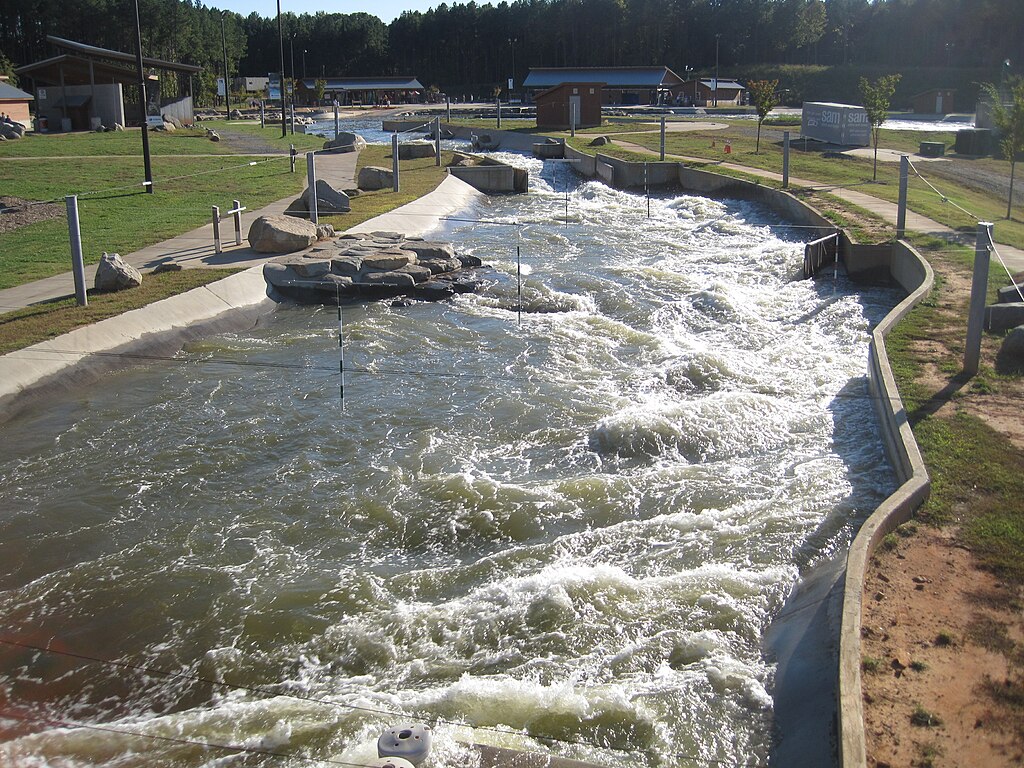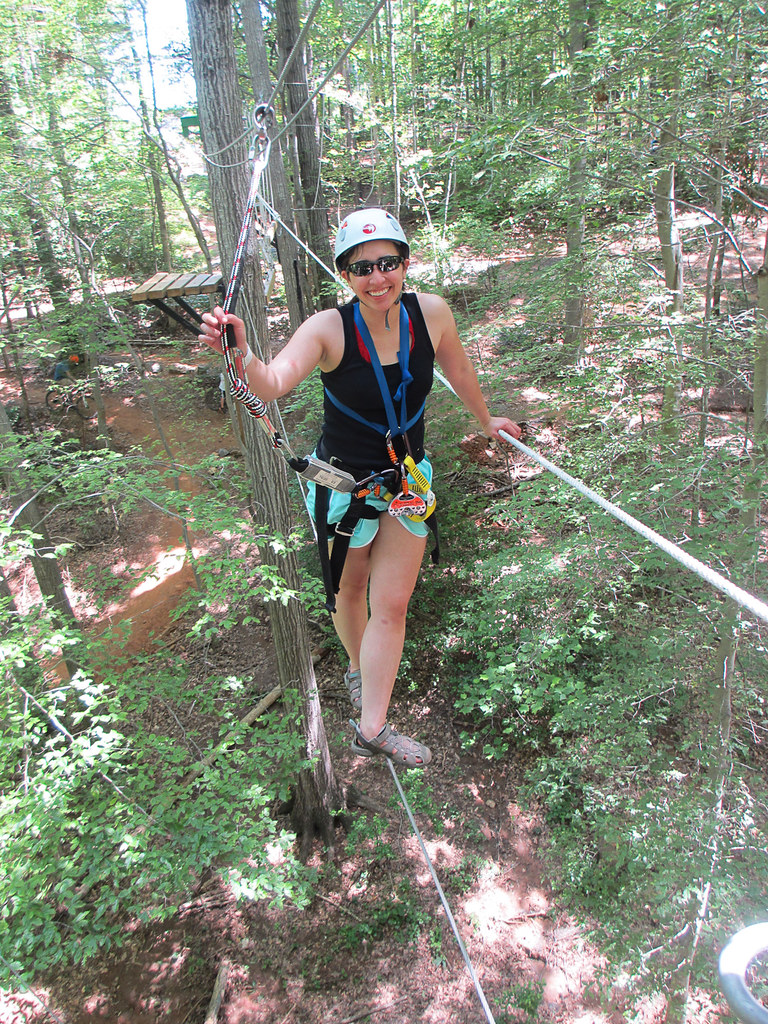(This page is in part replicated from the sister page on Wikipedia under the copyleft permission.)
The U.S. National Whitewater Center (USNWC) is a non-profit outdoor recreation and athletic training facility for whitewater rafting, kayaking, canoeing, rock climbing, mountain biking, and hiking. The center opened to the public on November 4, 2006.
Conveniently located in Charlotte, the Center boasts approximately 700 acres (2.8 km2) of land adjacent to the Catawba River.

The man-made river holds 12 million gallons of treated water which is moved by pumps. These seven pumps move 536,000 gallons of water every minute, or 9,000 gallons per second! [1]
Planning Your Visit
Address:
5000 Whitewater Center Pkwy, Charlotte, NC 28214
Admission:
The Center offers Allsport Passes and season passes with adult and youth options. These passes allow unlimited access to everything that USNWC has to offer for a day and year, respectively.
Design and Creation
The creators of the Center were inspired by the Penrith Whitewater Stadium built for the 2000 Olympics.
The Center's primary feature is the world's largest and most complex recirculating artificial whitewater river. The facility cost $38 million to build, and costs $6.8 million per year to operate. [2]
The river channels were designed by three-time Olympian Scott Shipley.
Training
The USNWC is an official Olympic Training Center for whitewater slalom racing. According to the USNWC, the best time to train begins late summer through early winter, as well as early spring through early summer.
Below is a diagram of the different channels. The Center offers both Slalom kayaking and whitewater rafting.

Activities
The Center offers water, land and ariel sports.
Water Sports:
- Whitewater Rafting - Rafters with rained guides can paddle Class II, III, and IV rapids on the artificial whitewater channels. The USNWC had 100,000 rafters in 2010.
- Whitewater kayaking - Whitewater kayakers. from beginner to expert, can paddle, with or without instructors, alongside Olympic contenders. Periodic slalom races are scheduled for all ages and all skill levels.
- Flatwater Kayaking - Flatwater kayaking is offered on the Catawba River, which is adjacent to USNWC's property.
- Stand-Up Paddle Boarding - Stand-Up Paddle Boarding is new to the USNWC in 2011. Participants stand on a board similar to a surf board and use a long paddle to maneuver along the Catawba River.
Land Sports
- Mountain Biking - The USNWC has over 14 miles of trails, ranging from beginner to advanced trails. Bikers can bring their own bikes and helmets or rent equipment from the USNWC.
- Eco Trekking - Eco Trekking is based on the geo caching system. Participants are given a GPS device and the coordinates to cache points located throughout the trails and facility.
- The Trail System - The USNWC has over 14 mils of trails which are shared by bikers, runners, and walkers. The trails are used for various races including the River Bound Race Series and the XTERRA Whitewater Trail Race and Triathalon. Bikers are asked to observe the "Rules of the Trail" as established by the International Mountain Bicycling Association. The Tarheel Trailblazers, a Chalotte based mountain biking group, assists in the development and maintenance of the trails.
- Rock Climbing - The USNWC's climbing center is one of the largest outdoor climbing centers in the world. The open-air climbing wall has over 40 roped climbs and reaches a height of 46 feet.

Ariel Sports
- Canyon Crossing - The Canyon Crossing opened as a new activity in spring 2011. The Canyon Crossing consists of a circuit of sky bridges with five different aerial challenges that spam the south ridge gorge at heights of over 50 feet. at the last platform is a 250-foot-sip-line which returns participants back across the gorge.
- Mega Zip - The MegaZip, which opened in 2009, is a 1,123-foot-zip-line which begins at the top of a 46 foot tower, goes over the whitewater river and ends at Hawk Island.
- Mega Jump - the Mega Jump is a controlled free fall from a 46-foot tower. The Mega Jump, which opened in 2010, utilizes the POWERFAN assisted free fall system, technology that was pioneered by the film industry.
- Adventure Course - The Adventure Course is an aerial obstacle course 20 feet high in the trees.
- Climb 2 Zip - The Climb 2 Zip is a 100-foot zip-line which begins at the top of a 32-foot platform.
- Canopy Tour - The Canopy Tour, which opened in 2011 and goes along with the recent demand for eco tourism, consists of 14 tree platforms linked by seven zip-lines, multiple sky bridges and other aerial challenges. The Canopy Tour reaches heights in excess of 60 feet and goes across wetlands and a 90-foot deep canyon, along the Catawba River and through portions of The Historic Tuckaseegee Ford and Trail. Guests are accompanied by two trained guides who provide educational information about the region of participants as they go from tree platform to tree platform.






